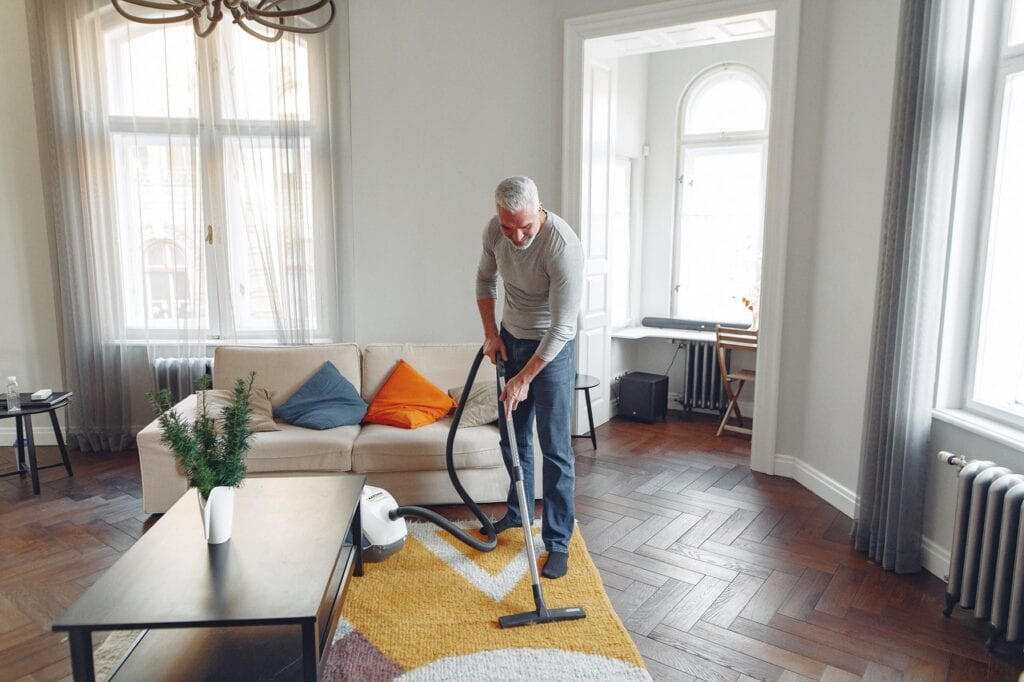Table of Contents
Various basic activities form part of the activities of daily living that are necessary for maintaining independence to age in place within a community or at home. These are performed daily and at times require the assistance of a caregiver. What are the activities of daily living?
There are five basic ADLs:

Picture the typical start to your day. Wake up, rollover, sit up and get oriented. Then stand and walk to the restroom. Brush teeth, use the toilet and shower. Then either dress for the day or a house coat until after breakfast.
When it comes to breakfast, lunch and dinner, menu planning is needed, shopping for food and meal preparation. Assuming this has been completed, you can sit down at the table to eat your breakfast and clean the kitchen and wash dishes once finished.
What we described over here all form part of the activities of daily living. And that was really just the morning routine.
Healthcare professionals refer to basic self-care tasks performed by seniors who live independently as activities of daily living or ADLs. These are fundamental in maintaining their independence and caring for themselves.
As you get older, ADLs become progressively more difficult to carry out on your own and involve a lot more time to perform. Then there are specific health issues such as falling, strokes, changing cognition, and a host of other things that affect your ability to accomplish ADLs.
If you feel your loved one needs assistance with ADL's to continue living at home, it may be helpful to see if their Primary care physician will refer them for home health physical and/or occupational therapy. They would have an evaluation to gauge just how much care or therapy is necessary. Healthcare service models would utilize an ADL assessment tool for elderly like the Katz ADL Index to evaluate their proficiency. Appropriate care plans would then be drawn up to ensure your elderly family member get the care they need.
Recognizing the ability to carry out basic activities of daily living is very important. Medical personnel, like qualified nurses and doctors, physical and occupational therapists can identify these properly. If you suspect your loved one may be having a bit of difficulty managing the day to day routine, an expert's recommendations should help navigate these changes.

Loss in daily living skills activities can be set off by:
According to the National Library of Medicine, ADL's are used used to show whether a person can function independently. The inability to do so results in the individual becoming dependent on other persons, using mechanical devices, or both.
The inability to perform certain daily activities can be unsafe and lead to poor life quality. Measuring a person's ability with ADLs is important as it will indicate the need for further assistance to safely age in place and prevent hospitalization. For more information refer to the Complete Guide to Aging in Place.
During hospitalization, nurses are often the first to notice a patient's inability to function properly. Therefore, regular ADL screening is needed and should be carried out on hospitalized patients. Especially if the person is submitted due to a chronic or acute illness that would influence their ability to sustain their independence at home.
Technologies play their part in individuals who find it difficult to carry out activities of daily living successfully. Certain mechanical devices allow the individual to complete ADLs with ease and takes far less time. This way, they can maintain their independence for longer.
Following are some examples of these assistive technologies:
As children or family members of an elderly loved one, we need to pay special attention to factors influencing activities of daily living. Often the elderly adult, our parent's physical capabilities alter as they age in that their muscular structure weakens, they become immobilized and suffer from memory loss or have shortness of breath. All of these would influence their ability to perform ADLs.
That's all for today.
Take care, keep mom safe and have a great day!
Winn